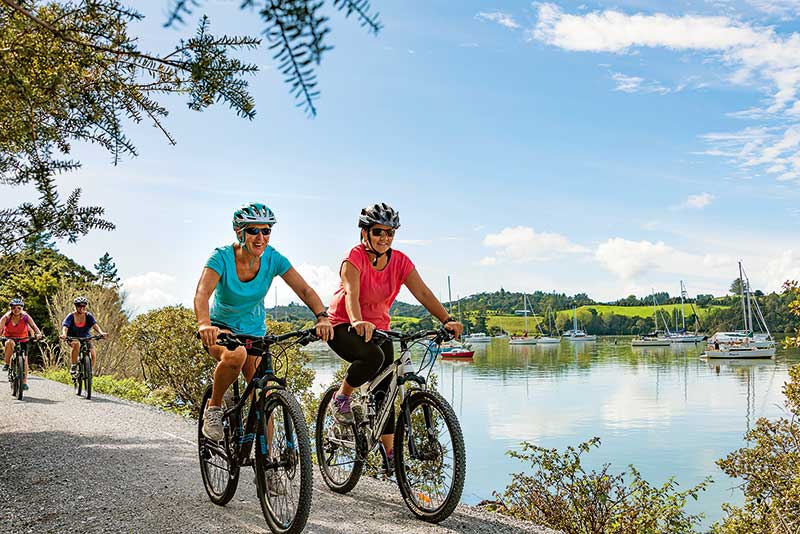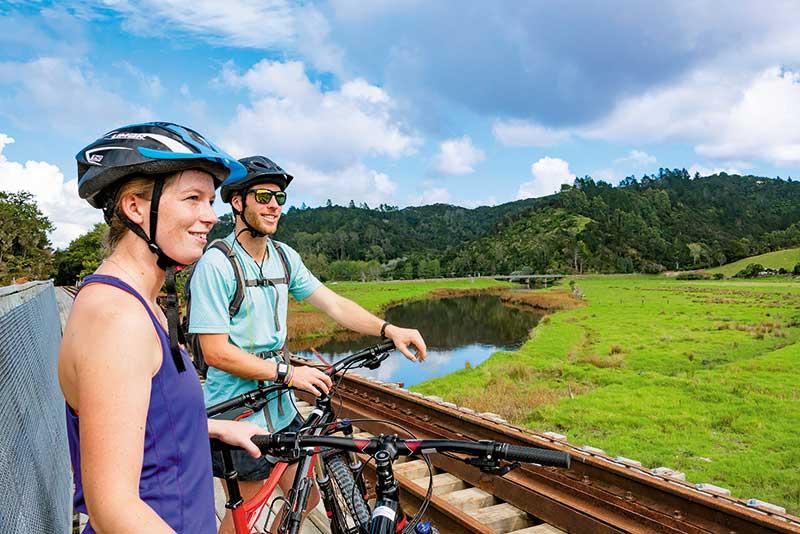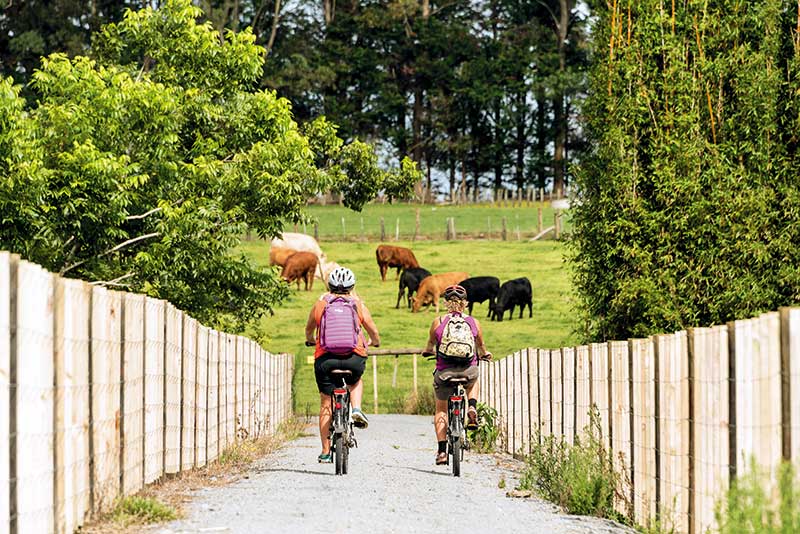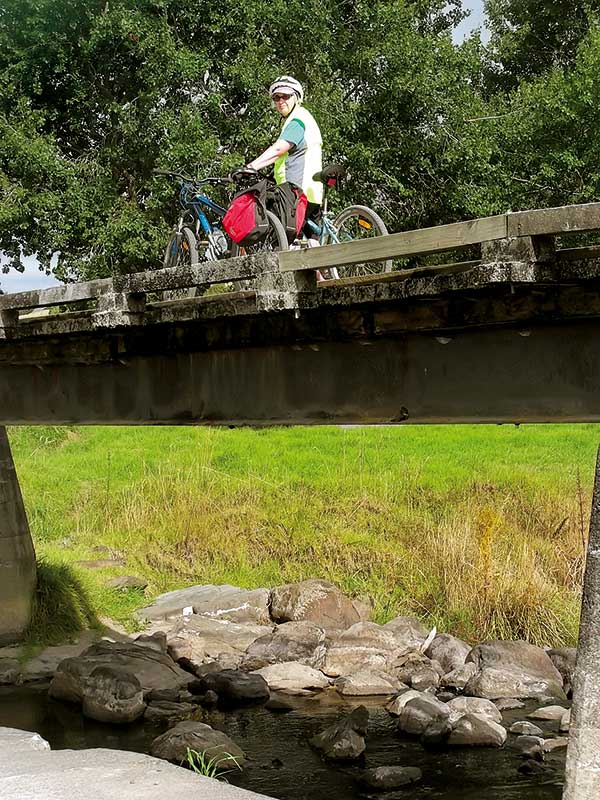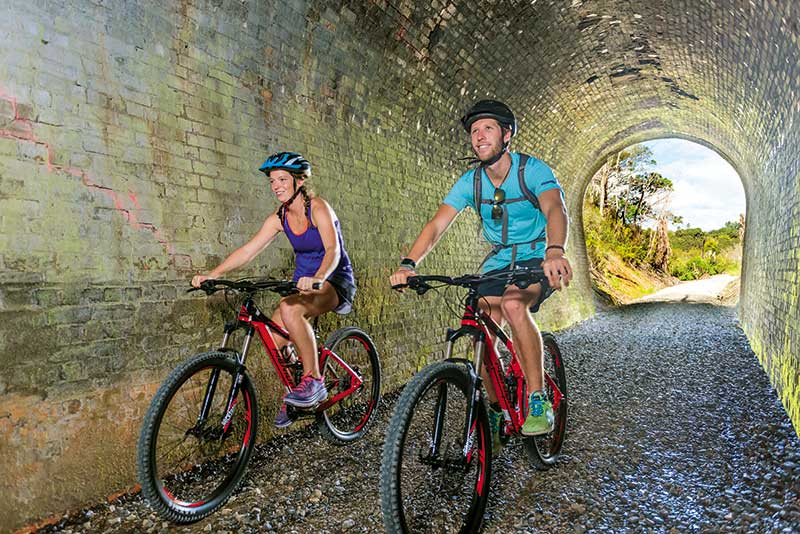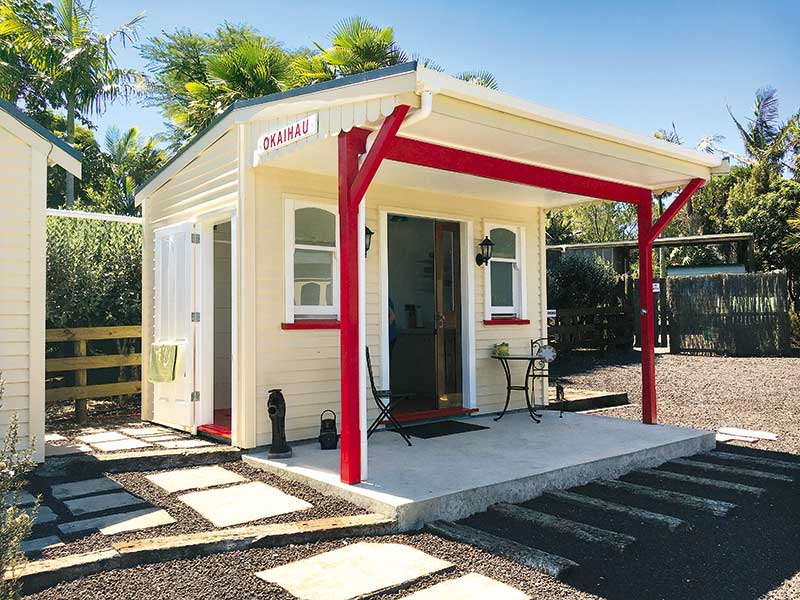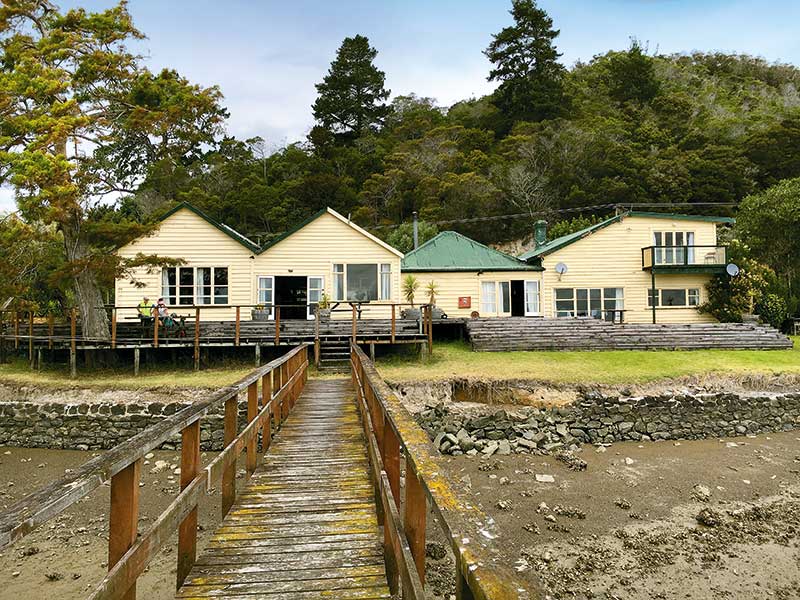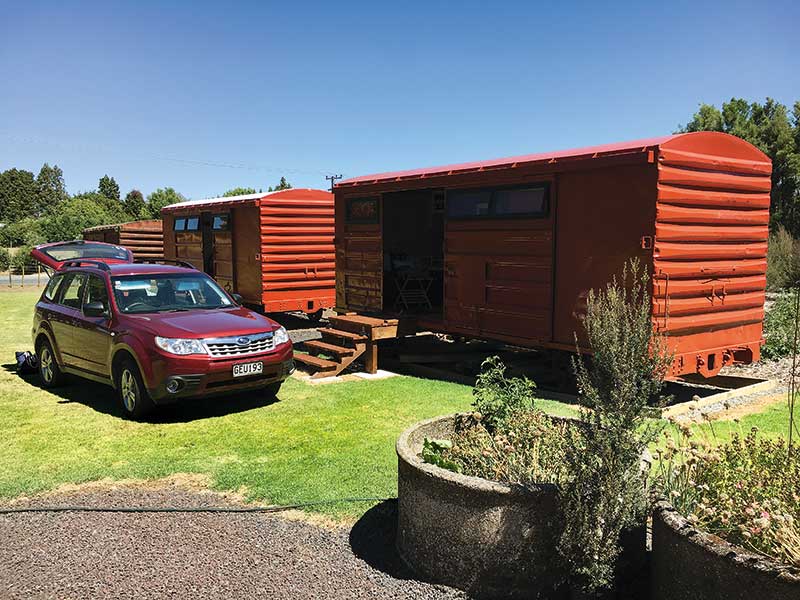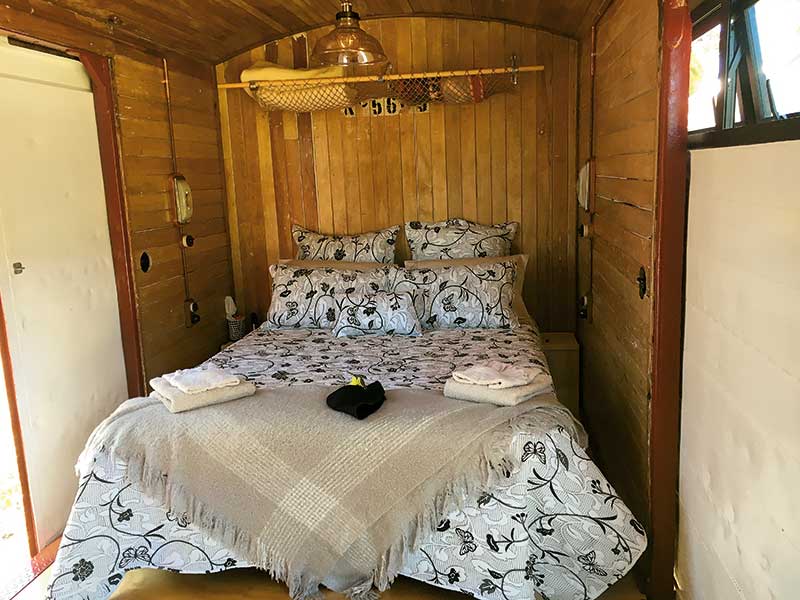Several summers ago, my wife Hope and I cycled the Twin Coast cycle trail which, at that stage, ran between Okaihau and Kaikohe aerodrome, a distance of about 20km.
We decided then that, when it was completed, we would be back to experience the whole ride from Opua on the East Coast to Horeke at the head of the Hokianga Harbour in the west.
The trail was finished in a flurry of activity just before Christmas and so, on Waitangi Day, we strapped the bikes onto the Forester and headed north.
Hope had spotted an intriguing-sounding advert for Okaihau Rail Stay, which promised comfortable lodgings in converted rail wagons just across the road from the trail.
This is a ‘one size fits all’ kind of trail of 82km, which can be done in a day if you are fit enough, but more comfortably ridden over two days.
Alternatively, you could ride Opua to Kawakawa and return, or Kawakawa to Kaikohe, Kaikohe to Okaihau, or Okaihau to Horeke. Using any of those towns for accommodation, you can tailor the ride to suit your time and/or experience.
If you reach either end, or any town in between, and would prefer to be shuttled back, then Top Trail, based in Kaikohe, is your solution.
Owner Ray can hire you a bike for the trip, too. Although we chose to visit the region by car, there is overnight freedom camping for motorhomes at Horeke, Kaikohe, and Kawakawa and a range of campgrounds within easy reach of the Opua end of the trail.
Our Okaihau stay was in a converted goods wagon called Bruce. Painted bright red and wood-lined, it had a comfortable bed and sofa and, also onsite, was a toilet, a well-equipped small kitchen, and splendid shower, which was a godsend after a long day on the trail.
Noeline Inverarity, who runs the business, is a friendly and attentive host.
While discussing our shuttle pickups with Top Trail, Ray suggested the easiest way to do the trail (more downhill riding) would be to tackle the Okaihau to Opua leg first and Okaihau to Horeke the next day, giving us a 58km ride first, followed by a 24km trail to Horeke.
First leg: from Okaihau to Kaiohe
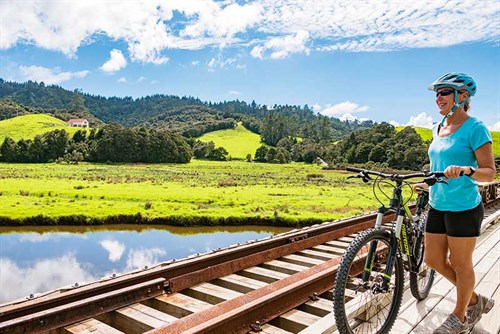
Okaihau to Kaikohe is an easy 14km ride following a disused railway corridor through wetlands, pine forest, and native bush and takes you past Lake Omapere and through an 80-metre curving rail tunnel built in 1915.
In Kaikohe, you can explore restored historic buildings, including New Zealand’s oldest courthouse, a blacksmith’s shop, and old gum digging equipment.
From Kaikohe, the trail runs past Kaikohe airport for 27km to Otiria, again following a disused rail corridor.
There is a 500-metre detour on a gravel road and some of the trail crosses private farmland where the way is often overgrown and there are many narrow gates, which can be a squeeze to negotiate, particularly if your bike has panniers. But we saw scurrying quail families, pheasants, turkeys, pukeko, and even a large hare, which bounded ahead of us for a time before heading away from the trail.
Otiria is the northernmost operational point on the national rail network and the trail runs for six kilometres past Moerewa and the refurbished and revitalised Affco freezing works, which has shaken off the economic slump of the 1980s and now specialises in export quality vacuum-packed beef.
Unfortunately, it still smells like the Moerewa of old and, on the 30°C day we were cycling, it certainly encouraged us to pick up the pace.
We reached Kawakawa, famous for its highly decorative toilets designed and built by artist Friedensreich Hundertwasser in 1998.
It is also home to Gabriel, a vintage steam train that runs through the main street and on for four kilometres towards Opua to Taumarere Station. This option is often taken by cycle trailers.
Eleven kilometres in total, the Kawakawa to Opua stretch runs over a number of bridges, including the longest curved wooden railway bridge in the country, through a tunnel and alongside the mangroves of the upper reaches of the Kawakawa River.
The ride into Opua ends at the Opua Marina and there is a cafe, car park, and toilets right where you end (or start) your ride. We were picked up here by Top Trail and shuttled back to ‘Bruce’ for the night.
Second leg: riding to Horeke
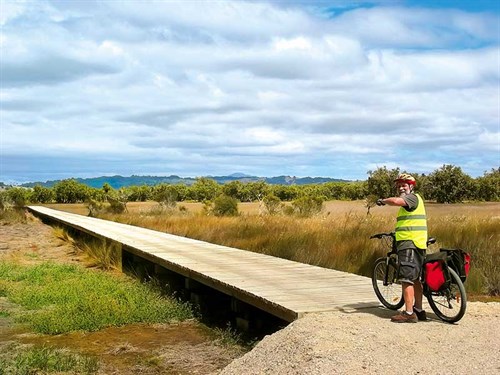
Early next morning, with the promise of another 30°C day, we set out for Horeke—a distance of 24km.
The early going is a purpose-built trail of finely-compacted gravel, which ends in a long and steep switchback descent locals call ‘heart attack hill’.
From there, the trail follows the meandering Utakura River through pleasant bush country for several kilometres.
There is a detour of 500 metres on Horeke Rd, which is partly why this section is a grade three trail, though the neighbouring farmers ensure the road is regularly maintained and sprayed.
A 1200-metre boardwalk crosses the mangroves at the edge of the harbour. Completed late last year, the boardwalk is the longest on any cycle trail in New Zealand.
Horeke, the first settlement in the Hokianga and the second-oldest town in New Zealand, is steeped in history.
The Mangungu Mission House was, in 1840, the scene of the third and largest signing of the Treaty of Waitangi.
Horeke shipyards, although a short-lived project, saw the first shipbuilding in the country and the district also had the first post office.
Horeke Hotel, with its grandstand view on the edge of the harbour, is the oldest surviving tavern in New Zealand and its current owner, Peter, will serve you a generous helping of local history with your meal.
He has good accommodation in a newer wing of the building and there is room for overnighting motorhomes alongside the pub.
After a cool drink, the thought of cycling back to Okaihau and confronting the ‘heart attack hill’ proved too much for us and we were happy to phone Ray and hitch a ride back to our waiting railway wagon.

